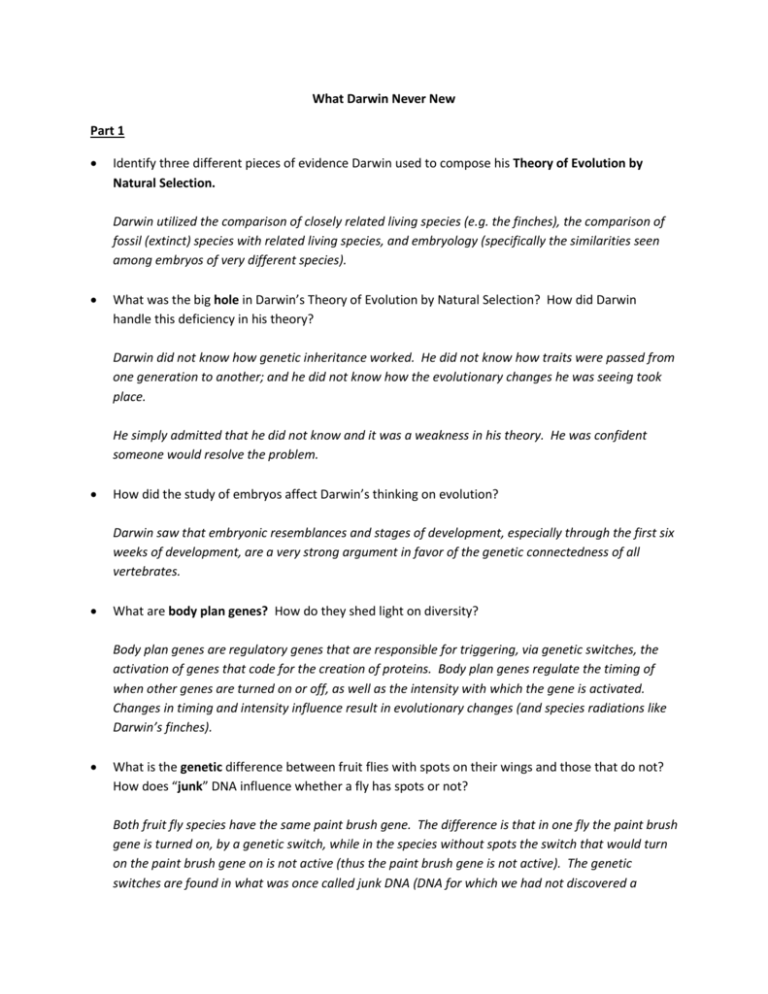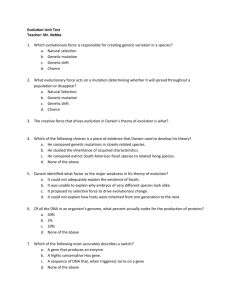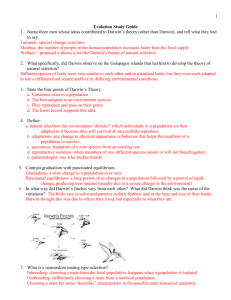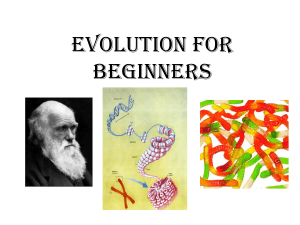Part 1 Study Guide: "What Darwin Didn`t Know"
advertisement

What Darwin Never New Part 1 Identify three different pieces of evidence Darwin used to compose his Theory of Evolution by Natural Selection. Darwin utilized the comparison of closely related living species (e.g. the finches), the comparison of fossil (extinct) species with related living species, and embryology (specifically the similarities seen among embryos of very different species). What was the big hole in Darwin’s Theory of Evolution by Natural Selection? How did Darwin handle this deficiency in his theory? Darwin did not know how genetic inheritance worked. He did not know how traits were passed from one generation to another; and he did not know how the evolutionary changes he was seeing took place. He simply admitted that he did not know and it was a weakness in his theory. He was confident someone would resolve the problem. How did the study of embryos affect Darwin’s thinking on evolution? Darwin saw that embryonic resemblances and stages of development, especially through the first six weeks of development, are a very strong argument in favor of the genetic connectedness of all vertebrates. What are body plan genes? How do they shed light on diversity? Body plan genes are regulatory genes that are responsible for triggering, via genetic switches, the activation of genes that code for the creation of proteins. Body plan genes regulate the timing of when other genes are turned on or off, as well as the intensity with which the gene is activated. Changes in timing and intensity influence result in evolutionary changes (and species radiations like Darwin’s finches). What is the genetic difference between fruit flies with spots on their wings and those that do not? How does “junk” DNA influence whether a fly has spots or not? Both fruit fly species have the same paint brush gene. The difference is that in one fly the paint brush gene is turned on, by a genetic switch, while in the species without spots the switch that would turn on the paint brush gene on is not active (thus the paint brush gene is not active). The genetic switches are found in what was once called junk DNA (DNA for which we had not discovered a purpose). It now appears that all of that junk DNA (98% of our DNA) is actually made up of body plan genes and genetic switches that turn off and on genes that make proteins.











